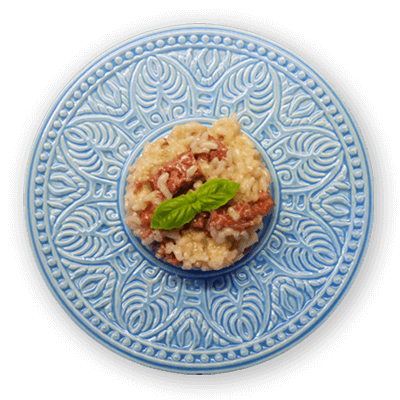The Historic City Center
The very central location of “Residence La Torre” makes visiting Mantua’s main historic attractions, the most important churches and buildings, comfortable on foot. The beauty of Mantua, however, does not lie merely in its magnificent buildings, but also in the beautiful squares and the charming alleys bordered by arcades and gracious homes.
The Renaissance charm of the city of the Gonzagas will accompany you throughout your stay. The “Lords” of Mantua lived in the most beautiful historic palaces, the most ancient and architecturally important was Palazzo Ducale, which was their official residence until the end of the seventeenth century. The palace flaunts magnificent rooms and numerous buildings connected by corridors and galleries, courtyards, squares and gardens, one in particular being a hanging garden. It also houses masterpieces from the fifteenth and sixteenth centuries, such as the Ciclo Cavalleresco (the Horse Cycle) by Pisanello and above all the Camera degli Sposi (The Bridal Chamber) by Mantegna, which is located within the castle fortress of Palazzo Ducale, Castello di San Giorgio, a wing that is famous throughout the world for its cycle of frescoes by Andrea Mantegna.
Another significant monument is Palazzo Te, an absolute jewel by Giulio Romano, built between 1525 and 1535. Palazzo Te houses several masterpieces such as the Sala dei Cavalli (the Hall of the Horses), dedicated to the prestigious horses that the Gonzagas bred and raised, the Camera di Amore e Psiche (the Chamber of Love and Psyche) designed to accommodate the most distinguished guests for banquets and dinners and the Camera dei Giganti (the Chamber of the Giants), renowned for its amazing acoustic and visual effects.
Just steps away from the Residence is a Renaissance architectural masterpiece, the Basilica of Sant’Andrea, designed by Leon Battista Alberti in 1472 and home to the funerary chapel of Mantegna.
Mantua flaunts a variety of artistic treasures including the Duomo, Teatro Bibiena, Torre della Gabbia, Palazzo della Ragione, Torre dell’Orologio, Casa del Mercante, Chiesa di San Lorenzo, the Tazio Nuvolari Museum, the Archaeological Museum, the Diocesan Museum, the Jewish Synagogue, Casa della Beata Osanna Andreasi, Palazzo D’Arco, Casa del Mantegna, Palazzo S. Sebastiano and its temple, the Fire Brigade Museum, Piazza Sordello and Piazza Erbe.
Find out what's around us
Surroundings
Interesting from a historical and a cultural point of view are the village of Sabbioneta, a splendid example of Renaissance architecture and the Sanctuary of Santa Maria delle Grazie of Curtatone.
Lake Garda, just 30km away, is easily reachable both by car and public transport, offering countless possibilities for recreation, such as excursions, tours, sporting activities, theme and water parks, as well as many opportunities for relaxation.
Not to be forgotten is the city of Verona. At a mere 40km from Mantua one can discover one of the most beautiful cities of Northern Italy and its enviable artistic heritage.
Cuisine
The city of the Gonzagas, a splendid jewel of artistic, naturalistic and landscape wonders, is also a surprising food and wine destination, offering a variety of culinary delicacies. The Mantuan cuisine is profoundly linked to the ancient rural traditions of the area and favours first courses and desserts, the true forte of the Mantuan meal.
The most representative Mantuan dish is perhaps handmade tortelli di zucca (pumpkin tortelli), the union between sweet pumpkin and bitter amaretti (almond flavoured biscuits) will provide you moments of pure joy. Another typical first course meal is risotto alla pilota (risotto with roasted pork sausage), which owes its name to the workers called “pilots” who were responsible for rice husking.
As for traditional second courses a special mention must be reserved for Mantuas stewed donkey.
And finally, to conclude, you can choose from a variety of different desserts. A must is “sbrisolona”, whose name derives from the noun brìsa, which in the Mantuan dialect means crumbs, the recipe seems to date back to before the 1600s when it arrived at the Gonzaga dimora. Other typical Mantuan deserts are the Elvezia cake and the delicious Torta delle rose (rose cake), dating back to 1490 and created specifically in honour of Isabella d’Este.




